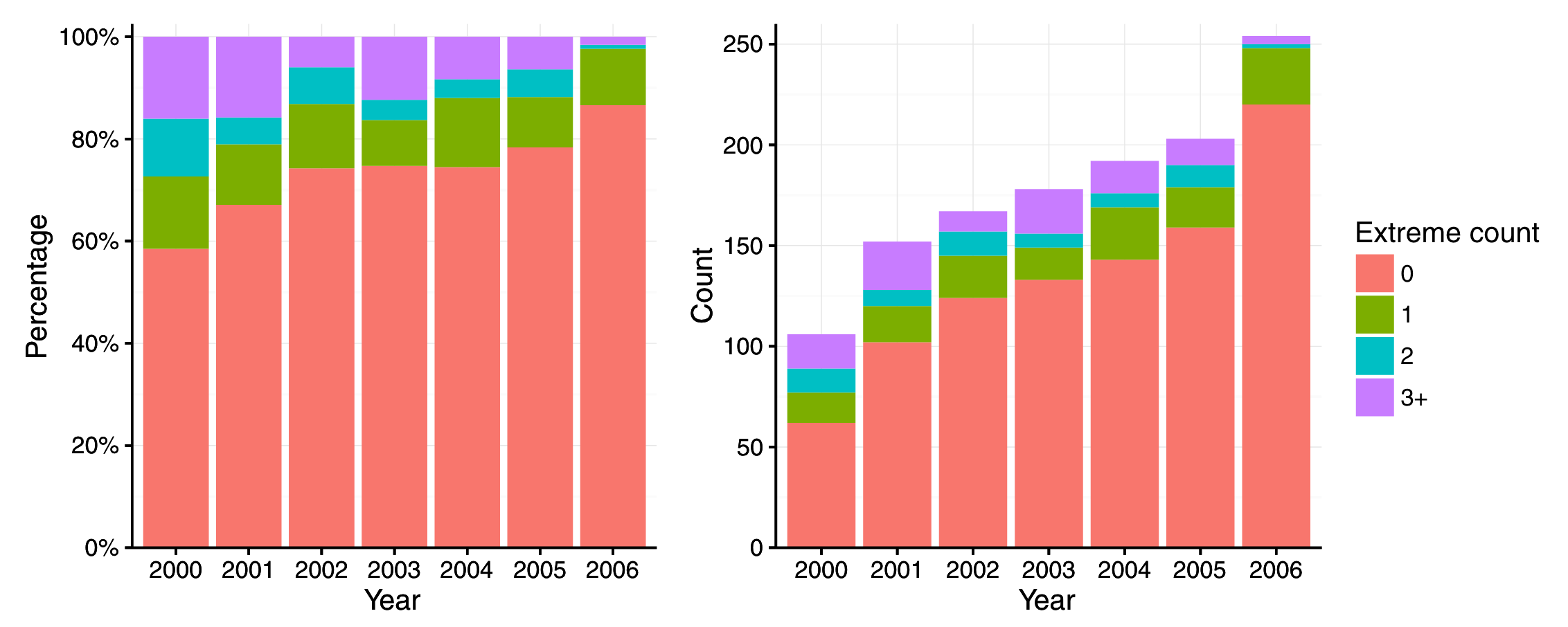
WA researchers have shown the so-called “autism epidemic” is due to an increase in diagnosis – not vaccines
Professor Andrew Whitehouse, Head of Autism Research at the Telethon Kids Institute and lead author of the landmark Australian study, says that while the prevalence of autism has increased 20-fold over the past 30 years, the reason behind this has remained a mystery.
He and his team went into the study to find out: “Why are autism rates increasing so much? Are there truly more kids with autism now than there were before, or is it more a case of us recognising more kids?”
Published in the international journal Autism Research, the study looked at data from the unique Western Australian Register for Autism Spectrum Disorders (ASD).
To achieve a diagnosis of ASD in Western Australia, individuals must demonstrate a combination of six or more of the 12 diagnostic criteria across three behavioural domains (social impairments, communication difficulties, restricted and repetitive behaviours and interests) as outlined in the Diagnostic and Statistical Manual of Mental Disorders (DSM-IV) and assessed by three independent health professionals.
At the point of diagnosis, doctors had to complete a one-page form and send it to the Telecom Kids Institute.
Clinicians also had to provide a severity rating scale for each of the autistic symptoms in diagnosed patients (mild, moderate and extreme).
“The most important thing was to capture 100% the data on kids diagnosed with autism in WA,” explains Professor Whitehouse.
Researchers looked at data from 2000-2006, which included about 1200 kids and corresponded with the greatest increase of children being diagnosed with autism.
There was a two-and-a-half times increase in the prevalence of kids diagnosed with autism – but the number of additional children who received a diagnosis had none of the 12 criteria rated as extreme.

Figure: Stacked bar plot showing the percentage (a) and count (b) of Autistic Disorder diagnoses in each calendar year who are rated as having “extreme” behavior on DSM-IV-TR criteria. Source: Andrew Whitehouse et al. 2017, Autism Research.
“The increase has been driven in an increase of children who were diagnosed with none of the extreme behaviours. So there’s been an increase of children diagnosed based on milder symptoms,” says Professor Whitehouse.
“In essence, there has been a clinical shift towards diagnosing children with less severe behavioural symptoms,” he says. “Other research has shown these children would previously have either received a diagnosis of another condition such as language impairment, or not received any diagnosis at all.”
Therefore the autism epidemic is likely due to a shift towards diagnosing children with less severe symptoms, he says.
“What it is, is a shift in our understanding of autism over time. Autism is no longer a condition where children have to have intellectual disabilities, but far milder. [However] these children with milder autism symptoms can still have issues with their daily life and mental health.”
Professor Whitehouse warns that it is wrong to infer that children with less severe symptoms do not have autism.
“Our understanding of the nature of autism has changed over time,” Professor Whitehouse says. “We now recognise that the condition presents along a spectrum. It is critical that we are all aware of the full range of presentations, as well as the considerable strengths that individuals on the spectrum bring to our community.”
While these results have been widely suspected for many years, there haven’t been any other studies that have shown the same conclusion because the data hasn’t been available.
“Because of the register, we’re getting data on all children across the state and a rating of their severity. No other register in the world has this data set,” he says.
from https://ajp.com.au/news/reason-behind-skyrocketing-autism-rates/
Editor's comment: this report does not address the crucial issue of why, while autism diagnoses have increased, the most extreme autism ratings have ceased/disappeared.
WA is (and was) atypical in Australia in relation to ASD diagnoses; it has substantially lower autism diagnosis rates than all other Australian states (only the NT has a lower autism diagnosis rate). WA also had a spectacularly low diagnosis rate of Asperger's disorder/syndrome.
The ABS's report on its SDAC data has reported reducing rates of severe and profound disability among autistic Australians since 2009: 74% of autistic Australians had severe or profound disability in 2009 (see here).